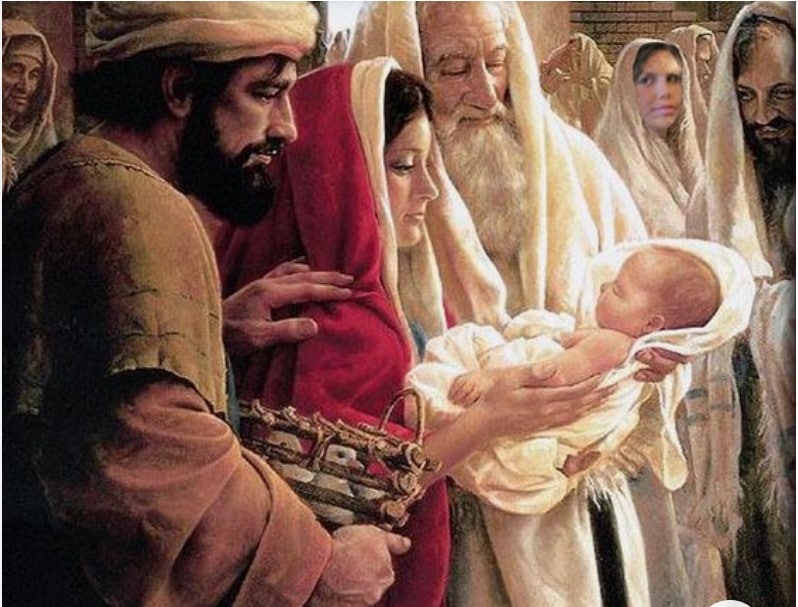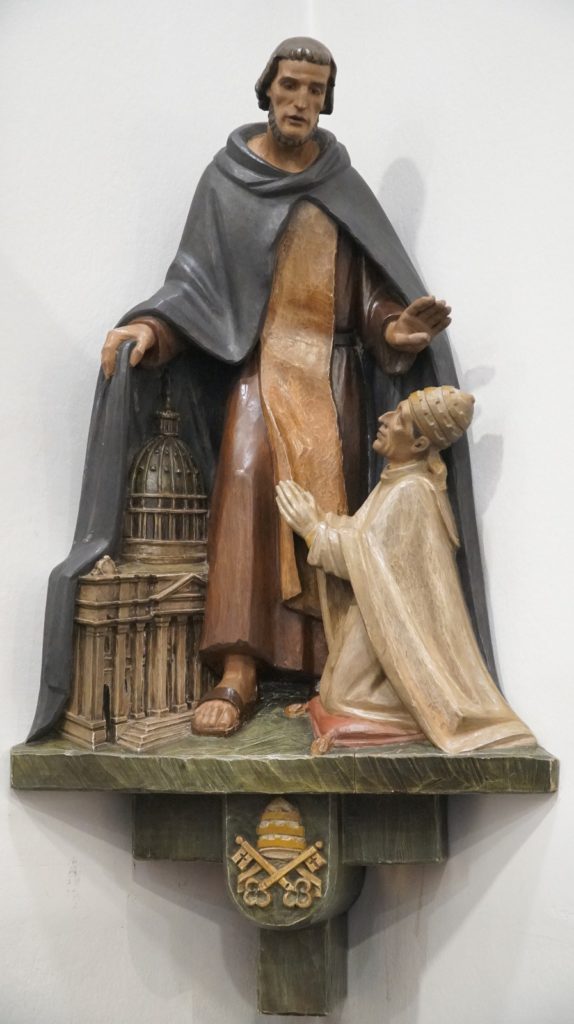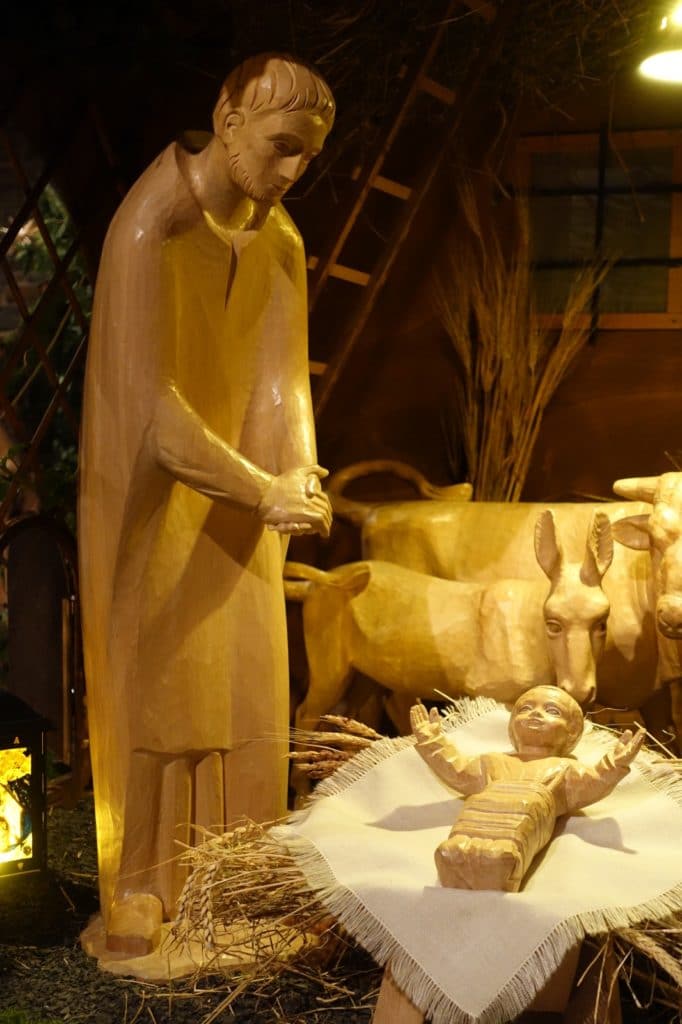Joseph, a just, silent and unknown man. He is so discreet that he insists on remaining in the background and letting all the light shine only for Jesus and Mary. He stays behind, in silence. But today we want his shining light to ignite us. We want to reveal a little of his brightness and contemplate the growth of his importance in our Schoenstatt Family, the importance our Father and Founder gave him.
In 1928, Father Joseph Kentenich reviewed the history of the devotion to St. Joseph in the Catholic Church: “The Church also experienced a growth in this sense, in the devotion to St. Joseph. From the theological point of view, there was still a long way to go before the veneration of St. Joseph penetrated more deeply into the whole Church. The veneration of St. Joseph came about earlier in the East than in the West. Reichenau’s martyrology dated around 1850, mentions St. Joseph for the first time. The mystics and theologians from end of the Middle Ages began to deal with his place in the history of salvation. It was not until 1479 that his feast was included in the Roman breviary”.
Father Kentenich adds: “In the history of the Church, wasn’t St. Joseph also neglected? In the fourth century paintings of him began to be made and his figure became more exposed. It wan’t until the 19th century, the century in which Mary was profoundly venerated, that the Holy Spirit intervened so that St. Joseph would be given a central standing and would be solemnly acknowledged as the protector of the Church”.
Our Father and Founder always sees St. Joseph in perfect unity with Mary. That is why he expressed in 1950 that “God speaks through situations.” Could it be that the Blessed Mother, through actual facts, wants to call our attention to St. Joseph?

From Schoenstatt’s origins
At the beginning of our Schoenstatt Family’s history we faced great difficulties, so, trust in St. Joseph’s help was naturally fostered. In 1950 the Founder spoke of the fortunate fact that “St. Joseph – since we proclaimed him as administrator of all our financial concerns – has fulfilled his task brilliantly”.
St. Joseph’s organic vision in Schoenstatt
Father Kentenich then adds: “With this, we not only put ourselves on the same level as the Church, but somehow we surpass it, above all because of the organic vision of the figure of St. Joseph and the integral way of worshipping him. We do not venerate him only in one particular sense or another, only as protector of the inner life and purity, only as builder, or only as minister of economy. This broadness gives a special character to the devotion to St. Joseph in our Family”.
The way we worship St. Joseph in Schoenstatt, as referenced by Father Kentenich, is wide-ranging. Our founder presents several characteristics of Mary’s husband. St. Joseph is the one who loved the Blessed Mother the most and was her faithful husband; he is also Jesus’s father, who protects and educates him; therefore, Joseph is a model as head of the family, a model of a father, husband, companion, with all the virtues needed to be part of the Holy Family.
Father Kentenich also expresses how God acts through “secondary causes”. In the history of salvation, Jesus is the main character and Mary is the one who gives her “yes” so that this story becomes a reality. But it’s St. Joseph, a “secondary” character in the story, who becomes the head of the family. Even in his smallness, he becomes a key figure in the salvation of humanity.
The more importance we give to spiritual and inner life, as well as the cultivation of virtues and striving for perfection and holiness, the more we ask for St. Joseph’s help and the more we are called by his holiness, his virtues, as we learn from his example.

To him we entrust everything
When the dangers to body and life are more numerous, when the worldly spirit wants to invade us and turn us away from our ideal, then we strengthen our trust in St. Joseph’s protection.
The greater the economic and financial woes become, even if they become grievous, the more we seek St. Joseph’s help in these afflictions and concerns as well.
The more we experience our limitations and shortcomings in our professional responsibilities and in the positions we occupy, the more numerous the problems that overwhelm us, the more we seek refuge in St. Joseph.
The more distressed and frightened we are because of age, sickness or the affliction of death, the more we place ourselves under St. Joseph’s protection trusting in his aid.
However, our Father and Founder gives us a warning: “It would be out of place, that is, it would be insensitive on our part if we thought: when we need him, then we’ll love him” (1928).
Yes, we can and we want to love St. Joseph. And the more we love him and make him our friend, the closer the Blessed Mother and Jesus will be to us, because the three of them form a union of hearts, they are one family, the Holy Family!
This is confirmed by our Father and Founder: “St. Thomas Aquinas once formulated it very clearly: each saint possesses a certain authority in his task – from each one we can receive a certain grace. However, from St. Joseph we can get everything. […] The time will come when St. Joseph will occupy a position of much greater strength and glory than he has had until now…. He must be included in the circle of love of our Family.”

May our love for St. Joseph grow
May our relationship with St. Joseph continue to grow, that is, may it become alive, vigorous and original again. This corresponds well with our Father and Founder, since he himself affirms: “It is very important for St. Joseph that we love him personally much more than we have loved him up to now” (1934).
Fr. Kentenich had already given us the following guidelines in 1932: “What do we want to do? To trust St. Joseph more deeply. To give more value to his images and statues. He must be included in the circle of love of our Family”.
Let our love for St. Joseph grow. Let us try to renew, deepen and enliven it. Let us not allow St. Joseph to remain in the corner, in the corner of a Shrine or a Home Shrine. Let us give him the place of honor that corresponds to him, above all, a small favorite place, a small preferred niche in our hearts.
In the same way, we trust that he will inspire many solid vocations for the holy Church and for the Schoenstatt Work, that he will take care to preserve in all consecrated persons the joy of their vocation and that he will guarantee in each one the growth in their ideal and sanctity.
That is why we want to say with confidence: St. Joseph, pray for us! We want to show St. Joseph our gratitude for all that we receive daily as material and spiritual blessings. How, then, can we repay him? How can we make him rejoice? St. Joseph, what gift do you want to receive in this, your special year? No doubt, St. Joseph’s answer will be: “Become the one I love the most! Become a little Mary! Each Schoenstatt child, each one is the greatest gift to me! Every Schoenstatt child, striving to become like Mary.
Source: santuariodeatibaia.org.br
